At first glance, the turquoise domes and gleaming surfaces of Samarkand’s Bibi Khanym Mosque represent everything a visitor, yearning to glimpse the history of this famous Silk Road city in Uzbekistan, could want: romance, beauty, piety, a grand memorial to the wealth and glory of Samarkand’s past. Built at the beginning of the 15th century, the mosque was named after the wife of Timur, the warlord known in the West as Tamerlane, who conquered a vast swath of Asia before his death in 1405. Beneath its domes, elaborate calligraphy decorates the huge gateway, and azure and gold tiles spread across towering walls.
But all is not necessarily as it seems. One of these famous blue domes was once cracked like an egg, another had totally collapsed; they are now substantially rebuilt. Some calligraphy is a late 20th-century addition, while newly tiled sections use modern designs that poorly replicate medieval patterns. Even the walls are not as they once were; over time, they have miraculously defied the ordinary course of aging and become substantially taller.
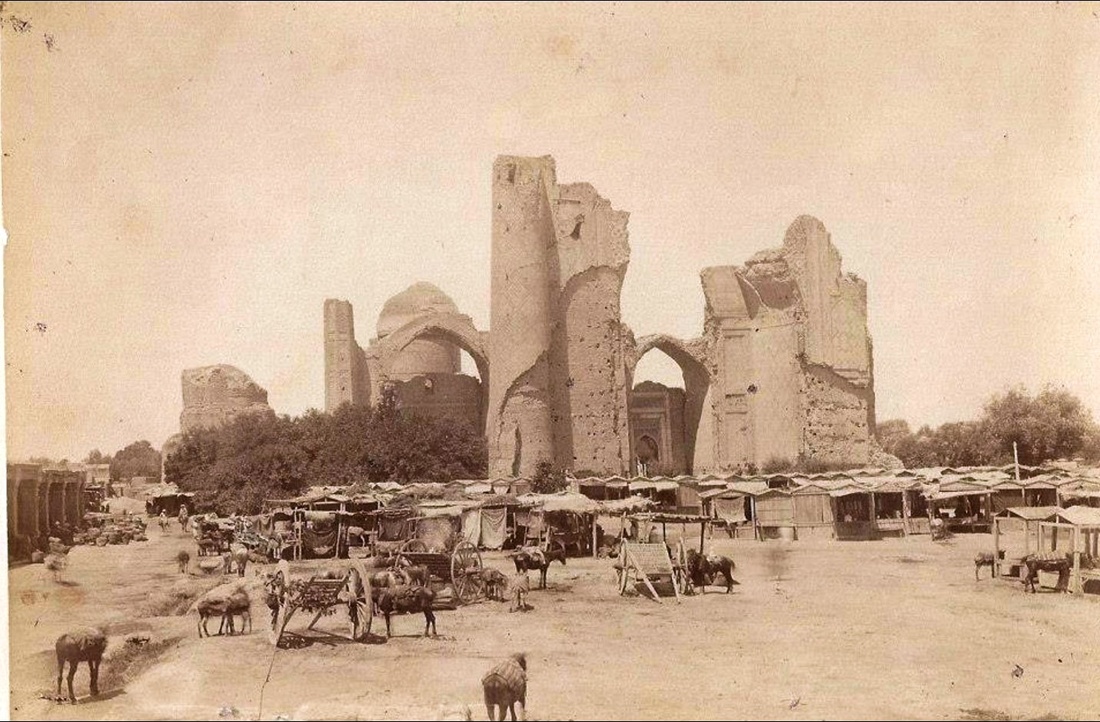
People gather in a Samarkand marketplace, circa 1910. In the background are the remains of the Bibi Khanym Mosque, partially destroyed by an earthquake in 1897.
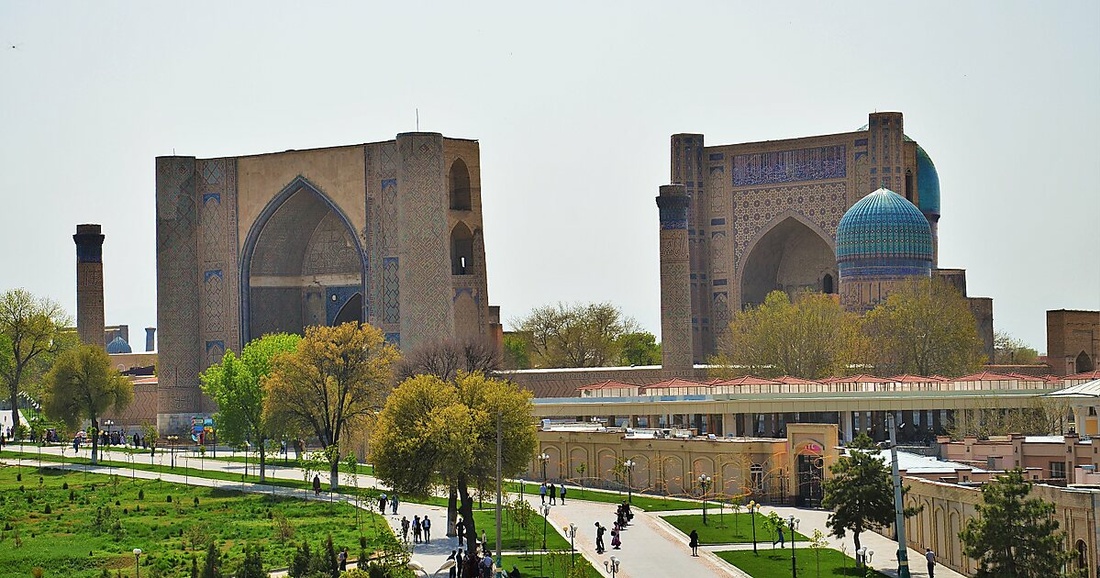
Traditional glazed ceramic tiles in intricate geometric shapes, many replicated as part of the building’s renovations, decorate the entrance of the Bibi Khanym Mosque.
Through the years, this mosque, and many other historic buildings in Samarkand, have been the source of much debate among visitors, locals, scholars, governments, and international bodies. Some say repairs are necessary to protect these sites and secure vital income from tourism. Others object to what they see as careless restorations that damage original structures and are accompanied by the demolition of neighborhoods considered unworthy of conservation.
UNESCO has granted World Heritage status to various locations in Uzbekistan, including Samarkand, the city it calls a “Crossroad of Cultures.” Yet the organization has repeatedly criticized the rebuilding works.
Such arguments have rumbled on for decades, but that may now be changing. Recent initiatives suggest that a more collaborative approach, aiming to preserve Samarkand’s history in a sustainable manner, is beginning to emerge.
Silk Road romance and reality
Uzbekistan, and particularly the city of Samarkand, houses some of the most famous Islamic architecture in the world and has long been a subject of besotted fascination in Western culture. Despite never visiting the city, Christopher Marlowe wrote about Samarkand’s “shining turrets [that] shall dismay the heavens,” Edgar Allan Poe called the city the “queen of Earth,” and James Elroy Flecker titled probably his most famous poem “The Golden Journey to Samarkand.”
In an attempt to capture that romance and excitement, and also to create a national identity, successive governments in Uzbekistan erected numerous statues of Timur, plastered Silk Road branding across the country, and—most notably—carried out substantial repairs to historic buildings, including in Samarkand. This restoration work extends well beyond the Bibi Khanym Mosque.
The entrance way of Timur’s grand mausoleum, for example, has been substantively rebuilt and adorned with a new Quranic inscription. In the center of the city, the public square known as the Registan is flanked by three huge madrassas, Islamic religious schools, all of which have been re-tiled, every surface now decorated with kaleidoscopic patterns. Other sites and other Uzbek cities have undergone similar refurbishments as well.
Some argue that Uzbekistan’s history might have been lost forever without such restorations. These monuments had been damaged by earthquakes and raided for construction materials; perhaps they would have collapsed entirely had they not been repaired. Plenty of visitors are delighted by the results, marveling at the size and beauty of the splendidly tiled porticos, iridescent domes, and repaved courtyards.
It is not just foreign tourists who are impressed, either. Odil Jahangirov, who runs a guesthouse in Samarkand, says that even those from the nearby Uzbek capital of Tashkent are frequently amazed by the restorations. “They’re more city-type, they don’t really see old buildings every day. They want to feel that old spirit: Samarkand for them is a little exotic,” says Jahangirov. “They’re like, ‘Oh wow! Look at this!’”
But others are far from thrilled, as they wander through a restored prayer hall in the gold-encrusted “Gilded Madrassa,” or gaze upon the intricate mosaics of Samarkand’s ancient, but heavily repaired, necropolis. For them, these restored mosques, madrassas, and mausoleums have become sanitized and fake, like theme park exhibits rather than historical sites.
Robert Hillenbrand, a leading scholar of Islamic art, singled out the Bibi Khanym Mosque’s restoration in an oft-cited article on the challenges of studying Islamic architecture, condemning what he saw to be inaccurate and poorly executed attempts to replace and repair portions of the buildings.
Some tourists may be concerned about what is being done, ostensibly for their sake, but it is local people who have been most affected by the way rebuilding has been carried out. While Uzbekistan’s most famous landmarks have perhaps suffered from over-conservation, Ona Vileikis, a researcher at University College London who works in heritage conservation, notes that surrounding areas have suffered due to a lack of interest at governmental and international levels.
“Samarkand’s monuments have been disconnected from their urban fabric,” she says. “The local, vernacular architecture is mostly unacknowledged.” As a result, says Vileikis, walls have been built, dividing neighborhoods in the city and artificially separating areas considered tourist-worthy from those that are not.

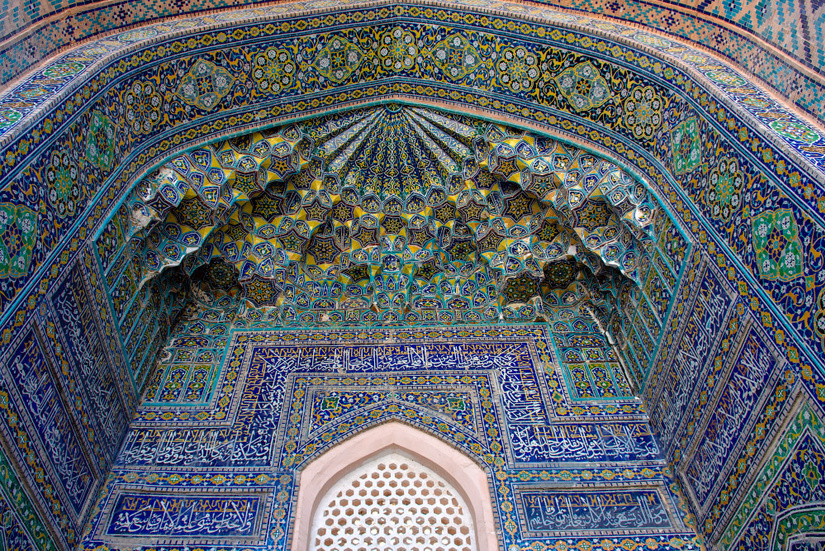
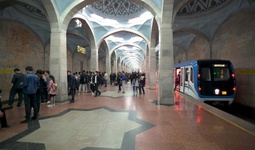
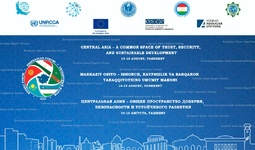

















leave a comment